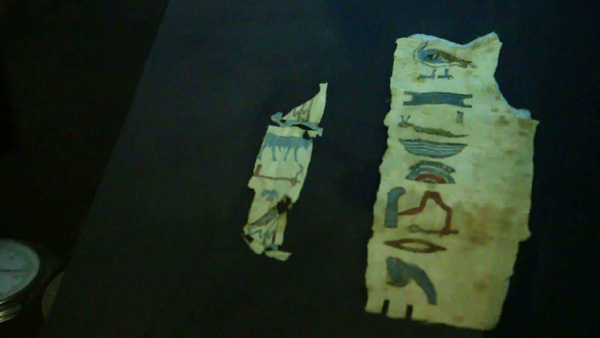As you walk along Islamic Cairo's famous El-Muezz Street, you will come across a grand Ottoman-era sabil, or building housing a public water fountain.
The sabil of Mohamed Ali is now host to the Egyptian Textile Museum, which narrates the history of the textile industry from the Pharaonic era until today.
Building sabils was a popular form of charity by the well-off in pre-modern times.
Sahar Ibrahim, who works in the museum's administration, told Ahram Online that Muhammad Ali, who ruled Egypt in the nineteenth century, erected this sabil as a tribute to his son, Ismail, who was killed while fighting in Sudan.
Before it was converted into a museum, the sabil functioned as a school for orphans, and then as Nahaseen Primary School, when both writer Naguib Mahfouz and former president Gamal Abdel-Nasser were pupils.
Ibrahim explains that the sabil-turned-museum has two floors, and includes 11 rooms in which the museum's displays are located.
One room features elaborate baroque and rococo designs on the ceiling, as well as the water tank formerly used to supply water to the sabil.
The museum's displays start in the Pharaonic era, and visitors will learn about the kind of clothes ancient Egyptians wore in their daily life, and can see bed covers apparently belonging to Queen Hatshepsut. The museum's Pharaonic collection also includes a child's nappy.

Ancient Egyptian patterns (Photo courtsey of the Egyptian Textile museum)
Another of the museum's rooms is devoted to the role textiles played in Egyptians' relationship with the hereafter. Linen shrouds for coffins are on display, decorated with images of various underworld gods.
There are also some amulets and statuettes representing other ancient Egyptian deities, including Anubis and Neith, who was the goddess of weaving.
Continuing through the museum, we move on to the Graeco-Roman era, with some examples of textiles from the Coptic era, which show the vital importance of textile manufacturing in Egypt at that time.

"Batrashil" the priest cloth used in praying made of red wool (Photo courtsey of the Egyptian Textile museum
Also on display are finds from the Bagawat cemetery in the Kharga oasis in south-western Egypt which was used from prehistoric times but boasts particularly well-preserved tombs and chapels from the fourth to the seventh century AD.
Another room features a model of a textile workshop, complete with a horizontal loom and other weaving tools.
Also on display is a batrasheel, a stole used formerly by Coptic priests and now by deacons during sacred liturgies. It is fashioned out of red wool and silver thread.
Linen is the main material on display in this period, as well as dyed wool, with beige and purple being particularly common.

sample of textile workshop using horizontal Noal (Photo courtsey of the Textile museum)
The museum also has displays of textile art from Egypt's Islamic period, after the Arab Conquest in the seventh century.
Coptic style continues to dominate, along with influences from Egypt's heritage, but in the Tulunid age (868 - 905 AD) fabrics no longer depict humans but instead were decorated with animals, plants and birds.

Part of the Kaaba cover delivered from Cairo to Mecca during Haj (Photo curtsey of the Egyptian Textile Museum)
In one room, the museum displays a kiswa, or covering for the Kaaba in Mecca, dating from the reign of King Farouk (1936-1952).
Each year Egyptians manufactured a new kiswa and sent it to Saudi Arabia before hajj season, an honoured tradition that started in the medieval period and continued until the twentieth century.
Short link: